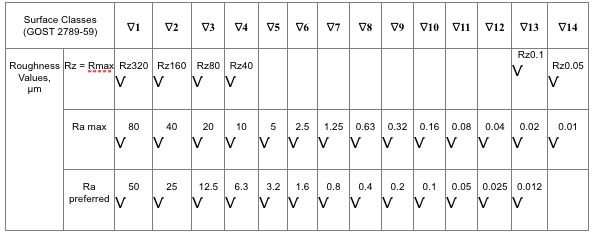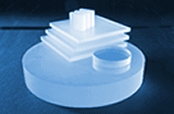| Control of surface quality |
Crystalline products are supplied with the following surface options:
As grown
A crystal is not processed after growth.
There are no special requirements for surface quality.
Such crystals are usually intended for further processing. In some cases as grown crystals may be suitable for mechanical, R & D and optical applications without additional processing (sapphire tubes and sapphire crucibles).
As cut
A crystal is cut to required dimensions.
There are no requirements for surface quality.
As cut crystals are usually intended for further processing. In some cases as cut crystals may be suitable for mechanical and R &D applications without additional processing (any crystal used for material testing).
Cleaved
A crystal is cut along a certain plane.
There are no requirements for surface quality.
A cleaved crystal is usually intended for further processing. Some crystals are difficult to process dur to the peculiarities of their lattice and they are used for R &D and optical applications without additional processing (GaSe, GaTe crystals)
Ground / lapped
A crystal is ground with rough abrasive powders to achieve required dimensions and smooth surface quality (Ra < 1 um). Surface should be inspected for chips, digs and scratches. Inspection methods – visual control and profylometer.
Ground crystals are usually intended for further processing. In some cases it is possible to use ground blanks for mechanical and R & D applications (sapphire blanks for laboratory equipment).
Inspection polished
A ground or as cut blank is polished with a finer abrasive powder to make the surface transparent. There are no special surface requirements, except that it should be transparent enough to see defects in the bulk of the crystal. Inspection polished parts are usually intended for further processing.
Optically polished
A crystal blank is polished with fine abrasives and / or slurries to achieve the necessary surface finish (Ra <0.1 um). May be carried out in several steps, each step using a slurry with smaller abrasive particles. Surface requirements depend on the required polishing grade. Surface should be inspected for chips, scratches and digs. Inspection method – visual control. Optically polished crystals are intended to be used as windows, viewports, lenses and other optical parts with or without additional optical coating.
Epi-polished (polished for epitaxy)
A crystal wafer is polished with slurries to achieve very fine surface finish (Ra< 5A). Surface should be inspected for scratches and digs. Inspection method – visual control in reflected light with a 10-50 times magnification.
Epi-polished wafers are to be used as substrates for depositing epitaxial layers (sapphire substrates for GaN epitaxy for LED chips production)
|
 |
| Another way to specify surface quality is by using profile roughness values which describe vertical deviations of the surface from its ideal form (peaks and valleys). Typically Ra or Rz parameters are considered when surface roughness is specified: Ra describes the arithmetic average of absolute deviation values Rz describes the surface deviations at 10 points (5 peaks and 5 valleys) |






